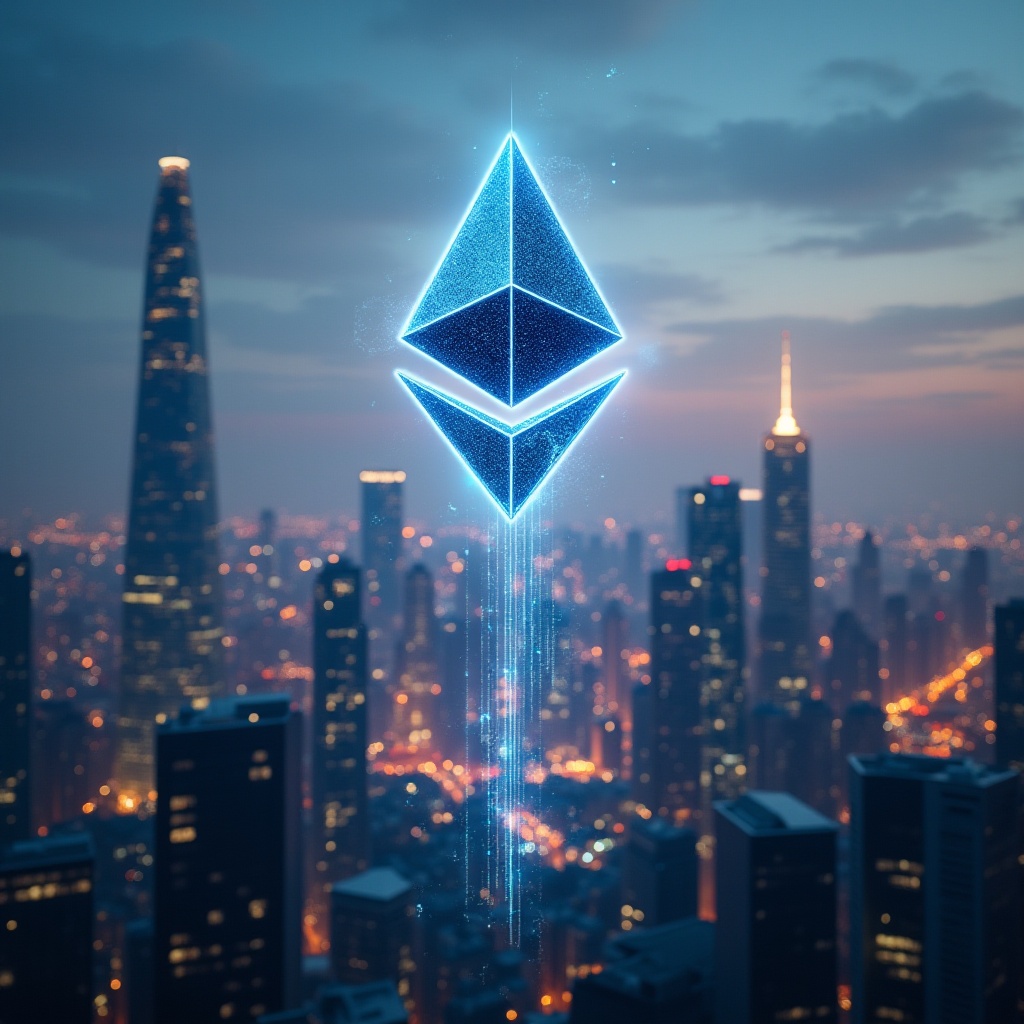Ethereum’s recent plunge in gas fees isn’t just a technical improvement—it’s a pivotal shift that directly impacts your trading strategies, investment decisions, and overall engagement with the Ethereum network.
Lower Transaction Costs = Higher Profit Margins
With gas fees dropping to as low as $0.41 per transaction, down from peaks of $15.21 in early 2024, the cost of executing trades has significantly decreased. For instance, an average token swap now costs approximately $0.39, and an NFT sale averages $0.65 in gas fees.
This reduction means that smaller trades, previously uneconomical due to high fees, are now viable. Traders can execute more frequent transactions without the constant concern of diminishing returns due to excessive costs.
Enhanced Market Liquidity
Lower gas fees encourage more participants to transact on the Ethereum network, leading to increased market liquidity. This heightened activity can result in tighter spreads, more efficient price discovery, and a more dynamic market environment. For traders, this translates to better execution of trades and potentially more favorable market conditions.
Opportunities for Arbitrage
With reduced transaction costs, arbitrage opportunities become more accessible. Traders can exploit price discrepancies between different exchanges or platforms without the risk of gas fees eroding profits. This is particularly advantageous in volatile markets where price differences can be fleeting.
Strategic Timing for Transactions
Understanding gas fee trends allows traders to time their transactions more effectively. For example, executing trades during periods of low gas fees can lead to significant cost savings. Tools and platforms that provide real-time gas fee data can assist traders in identifying optimal times for transactions.
Long-Term Investment Implications
The sustained decrease in gas fees suggests a more scalable and efficient Ethereum network. For long-term investors, this indicates a maturing ecosystem that can support increased adoption and usage. A more efficient network can lead to greater confidence among institutional investors and developers, potentially driving further growth in the Ethereum space.
In summary, the significant drop in Ethereum gas fees presents a multitude of opportunities for crypto investors and traders. By capitalizing on lower transaction costs, enhanced liquidity, and improved market conditions, participants can optimize their strategies and potentially achieve better outcomes in their crypto endeavors.
Strategies for Crypto Investors and Traders in the Current Gas Fee Environment
With Ethereum’s gas fees plummeting to historic lows, the landscape for crypto investors and traders has shifted dramatically. The Dencun upgrade has not only reduced transaction costs but also opened new avenues for strategic engagement with the Ethereum network. Here’s how you can navigate this evolving environment:
Maximizing Profit Margins with Lower Transaction Costs
The significant reduction in gas fees means that executing trades, especially smaller ones, has become more cost-effective. For instance, the average cost for a token swap has decreased from $86 to approximately $0.39, and an NFT sale now averages $0.65 in gas fees.
Actionable Steps:
- Reevaluate Trading Strategies: With lower fees, consider increasing the frequency of trades or exploring smaller arbitrage opportunities that were previously unprofitable.
- Optimize Trade Timing: Utilize tools like Gas Tracker to identify periods of low gas fees and plan transactions accordingly.
Leveraging Layer-2 Solutions for Enhanced Efficiency
While Ethereum’s mainnet fees have decreased, Layer-2 solutions like Arbitrum and Optimism continue to offer faster and cheaper transactions. These platforms have become more efficient post-Dencun, providing an alternative for users seeking even lower costs and faster transaction finality.
Actionable Steps:
- Diversify Platforms: Incorporate Layer-2 solutions into your trading strategies to benefit from reduced fees and increased transaction speeds.
- Monitor Layer-2 Adoption: Keep an eye on the adoption rates and performance metrics of various Layer-2 platforms to identify the most efficient options.
Timing Transactions to Capitalize on Market Trends
The correlation between gas fees and market activity suggests that periods of low gas fees can stimulate increased network usage. For instance, Ethereum’s daily transaction volume spiked by 18% to over 1.2 million transactions on May 17, 2025, coinciding with a significant drop in gas fees.
Actionable Steps:
- Monitor Gas Fee Trends: Use platforms like Gas Tracker to track gas fee trends and anticipate potential market movements.
- Align Trades with Market Sentiment: Plan transactions during periods of low gas fees, as this may coincide with increased market activity and potential price appreciation.
Exploring Arbitrage Opportunities with Reduced Costs
The decrease in gas fees has made arbitrage opportunities more accessible. Traders can now exploit price discrepancies between different exchanges or platforms without the risk of gas fees eroding profits. This is particularly advantageous in volatile markets where price differences can be fleeting.
Actionable Steps:
- Identify Arbitrage Opportunities: Monitor price differences across various exchanges and platforms to identify potential arbitrage opportunities.
- Calculate Potential Profits: Ensure that the potential profits from arbitrage exceed the combined costs of transactions, including gas fees, to make the strategy viable.
Long-Term Investment Considerations
The sustained decrease in gas fees suggests a more scalable and efficient Ethereum network. For long-term investors, this indicates a maturing ecosystem that can support increased adoption and usage. A more efficient network can lead to greater confidence among institutional investors and developers, potentially driving further growth in the Ethereum space.
Actionable Steps:
- Evaluate Ethereum’s Position: Assess Ethereum’s competitive position relative to other blockchain platforms, considering factors like scalability, transaction costs, and developer activity.
- Monitor Network Upgrades: Stay informed about upcoming network upgrades and their potential impact on Ethereum’s performance and adoption.
In summary, the reduction in Ethereum’s gas fees presents a unique opportunity for investors and traders to optimize their strategies. By leveraging lower transaction costs, utilizing Layer-2 solutions, timing transactions effectively, exploring arbitrage opportunities, and considering long-term investment implications, participants can navigate the evolving Ethereum landscape to their advantage.
Comparative Analysis: Ethereum Gas Fees vs. Other Blockchains
Ethereum’s recent reduction in gas fees has sparked discussions about its competitiveness relative to other blockchain platforms. While Ethereum remains a dominant force in the blockchain space, it’s essential to compare its current gas fees with those of other prominent networks to understand its position better.
Ethereum’s Current Gas Fees
As of early 2025, Ethereum’s average gas fee has decreased significantly, reaching approximately 2.7 gwei. This reduction is primarily attributed to the Dencun upgrade, which introduced improvements in scalability and transaction efficiency. For instance, the average cost for a token swap has fallen from $86 to about $0.39, and an NFT sale now averages $0.65 in gas fees.
Comparison with Other Blockchains
| Blockchain | Average Gas Fee (USD) | Notes |
|---|---|---|
| Ethereum | $0.39–$0.65 | Significant reduction post-Dencun upgrade; still higher than some competitors. |
| Binance Smart Chain (BSC) | ~$0.10 | Lower fees; however, concerns about centralization and security have been raised. |
| Solana | ~$0.00025 | Extremely low fees; known for high throughput and fast transaction speeds. |
| Polygon (MATIC) | ~$0.01 | Offers low fees and is widely used for decentralized applications; operates as a Layer-2 solution for Ethereum. |
| Avalanche (AVAX) | ~$0.02 | Low fees with high throughput; gaining traction in DeFi and enterprise applications. |
| Cardano (ADA) | ~$0.02 | Low fees; focuses on scalability and sustainability; however, adoption is still growing. |
| Algorand (ALGO) | ~$0.001 | Minimal fees; designed for high-speed transactions and scalability. |
Factors Influencing Gas Fees
Several factors contribute to the differences in gas fees across blockchains:
- Consensus Mechanism: Proof-of-Stake (PoS) systems, like Ethereum’s current model, often have lower energy costs and can offer reduced transaction fees compared to Proof-of-Work (PoW) systems.
- Network Demand: High demand for transaction processing can lead to increased fees, as seen during periods of network congestion on Ethereum.
- Scalability Solutions: Implementations like sharding and Layer-2 solutions (e.g., rollups) can significantly reduce transaction costs by increasing throughput.
- Block Size and Transaction Speed: Blockchains like Solana and Avalanche have larger block sizes and faster block times, allowing for more transactions per second and lower fees.
Implications for Ethereum Users
While Ethereum’s gas fees have decreased, they remain higher than some of its competitors. Users seeking minimal transaction costs might consider alternatives like Solana or Binance Smart Chain. However, Ethereum offers unparalleled security, decentralization, and a vast ecosystem of decentralized applications (dApps).
For those prioritizing security and decentralization, Ethereum remains a top choice. Utilizing Layer-2 solutions like Arbitrum or Optimism can further reduce transaction costs while benefiting from Ethereum’s robust security features.
Comparative Analysis: Ethereum Gas Fees vs. Other Blockchains
Ethereum’s recent reduction in gas fees has sparked discussions about its competitiveness relative to other blockchain platforms. While Ethereum remains a dominant force in the blockchain space, it’s essential to compare its current gas fees with those of other prominent networks to understand its position better.
Ethereum’s Current Gas Fees
As of early 2025, Ethereum’s average gas fee has decreased significantly, reaching approximately 2.7 gwei. This reduction is primarily attributed to the Dencun upgrade, which introduced improvements in scalability and transaction efficiency. For instance, the average cost for a token swap has fallen from $86 to about $0.39, and an NFT sale now averages $0.65 in gas fees.
Comparison with Other Blockchains
| Blockchain | Average Gas Fee (USD) | Notes |
|---|---|---|
| Ethereum | $0.39–$0.65 | Significant reduction post-Dencun upgrade; still higher than some competitors. |
| Binance Smart Chain (BSC) | ~$0.10 | Lower fees; however, concerns about centralization and security have been raised. |
| Solana | ~$0.00025 | Extremely low fees; known for high throughput and fast transaction speeds. |
| Polygon (MATIC) | ~$0.01 | Offers low fees and is widely used for decentralized applications; operates as a Layer-2 solution. |
| Avalanche (AVAX) | ~$0.02 | Low fees with high throughput; gaining traction in DeFi and enterprise applications. |
| Cardano (ADA) | ~$0.02 | Low fees; focuses on scalability and sustainability; however, adoption is still growing. |
| Algorand (ALGO) | ~$0.001 | Minimal fees; designed for high-speed transactions and scalability. |
Factors Influencing Gas Fees
Several factors contribute to the differences in gas fees across blockchains:
- Consensus Mechanism: Proof-of-Stake (PoS) systems, like Ethereum’s current model, often have lower energy costs and can offer reduced transaction fees compared to Proof-of-Work (PoW) systems.
- Network Demand: High demand for transaction processing can lead to increased fees, as seen during periods of network congestion on Ethereum.
- Scalability Solutions: Implementations like sharding and Layer-2 solutions (e.g., rollups) can significantly reduce transaction costs by increasing throughput.
- Block Size and Transaction Speed: Blockchains like Solana and Avalanche have larger block sizes and faster block times, allowing for more transactions per second and lower fees.
Implications for Ethereum Users
While Ethereum’s gas fees have decreased, they remain higher than some of its competitors. Users seeking minimal transaction costs might consider alternatives like Solana or Binance Smart Chain. However, Ethereum offers unparalleled security, decentralization, and a vast ecosystem of decentralized applications (dApps).
For those prioritizing security and decentralization, Ethereum remains a top choice. Utilizing Layer-2 solutions like Arbitrum or Optimism can further reduce transaction costs while benefiting from Ethereum’s robust security features.
The Future of Ethereum Gas Fees: What’s Next?
Ethereum’s gas fees have experienced a significant decline, reaching levels not seen in years. As of June 9, 2025, the average gas price was 4.989 gwei, a substantial decrease from 9.954 gwei a year ago. This reduction is primarily attributed to the Dencun upgrade, which introduced improvements in scalability and transaction efficiency.
1. Upcoming Upgrades: Pectra and Full Danksharding
The anticipated Pectra upgrade, scheduled for mid-2025, aims to enhance Ethereum’s scalability and efficiency. This upgrade is expected to bring various updates, including EIP-7251, which increases the staking amount per validator, and EIP-7702, which allows for the use of functionality from a smart contract.
Additionally, the implementation of full danksharding is expected to allow Ethereum to scale up to more than 100,000 transactions per second, further reducing transaction costs and improving network efficiency.
2. Layer-2 Solutions and Their Impact
Layer-2 solutions, such as Arbitrum and Optimism, have already contributed to the reduction in gas fees by processing transactions off the main Ethereum chain. These solutions are expected to continue playing a crucial role in alleviating congestion and lowering transaction costs.
3. Market Dynamics and User Behavior
The correlation between gas fees and market activity suggests that periods of low gas fees can stimulate increased network usage. For instance, Ethereum’s daily transaction volume spiked by 18% to over 1.2 million transactions on May 17, 2025, coinciding with a significant drop in gas fees.
As Ethereum continues to evolve, monitoring these developments will be crucial for users and investors to navigate the changing landscape of gas fees and network efficiency.
Navigating Ethereum’s Evolving Gas Fee Landscape
Ethereum’s gas fees have undergone a significant transformation, reaching levels not seen in years. The Dencun upgrade, implemented in March 2024, introduced enhancements such as EIP-4844, which reduced data posting costs for rollups, leading to a substantial decrease in gas fees. As of March 2025, Ethereum’s average gas fee has fallen from 72 gwei to just 2.7 gwei, a 95% reduction over the past year.
This decline in gas fees has made Ethereum more accessible and cost-effective for users, particularly benefiting traders and investors who frequently interact with the network. However, the reduction in fees has also led to a decrease in Ethereum’s revenue from transaction fees, as users have migrated to Layer-2 solutions like Arbitrum and Base, which offer even lower fees.
Looking ahead, the upcoming Pectra upgrade is expected to further enhance Ethereum’s scalability and efficiency, potentially reducing costs and increasing execution capacity. However, challenges remain, including the need to maintain a balance between low fees and network sustainability.
For crypto investors and traders, the current environment presents both opportunities and challenges. The low gas fees make Ethereum more attractive for executing trades and interacting with decentralized applications. However, the shift towards Layer-2 solutions and the potential impact on Ethereum’s revenue model require careful consideration when developing strategies.
In conclusion, while Ethereum’s reduced gas fees signify positive progress towards a more scalable and efficient network, ongoing developments and market dynamics will continue to shape the landscape for users and investors alike.





